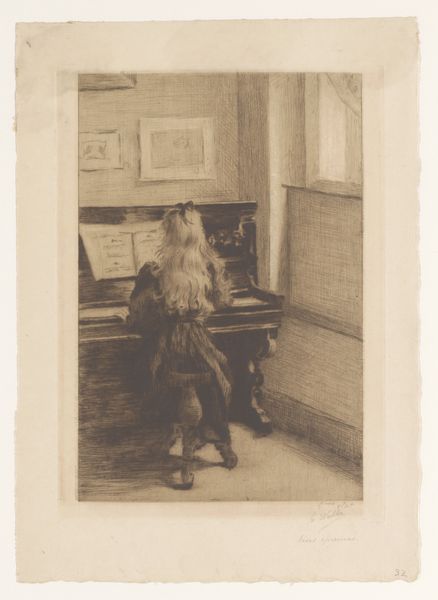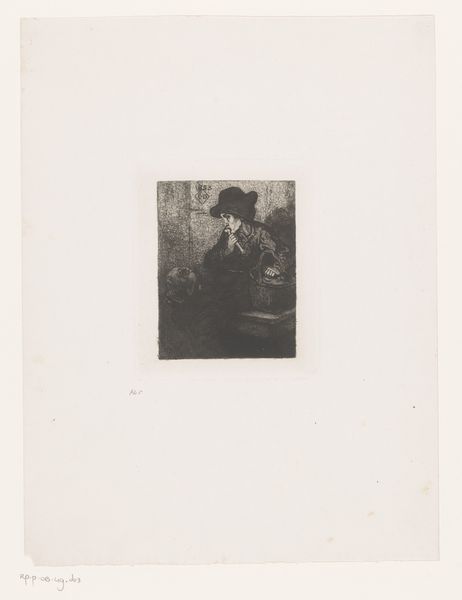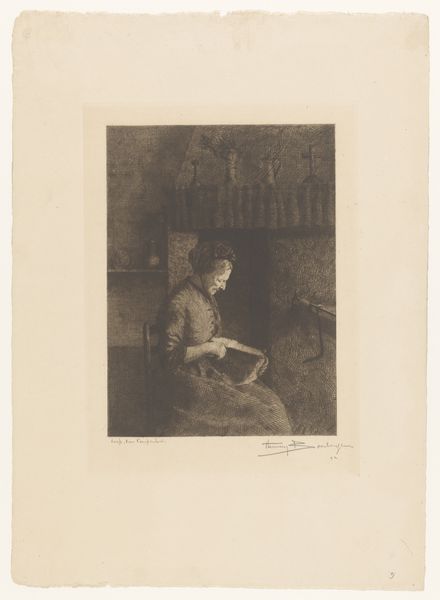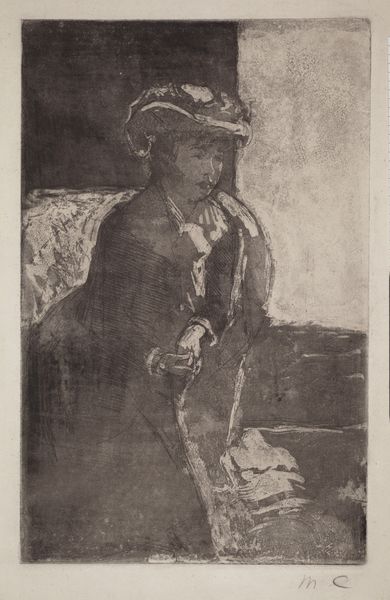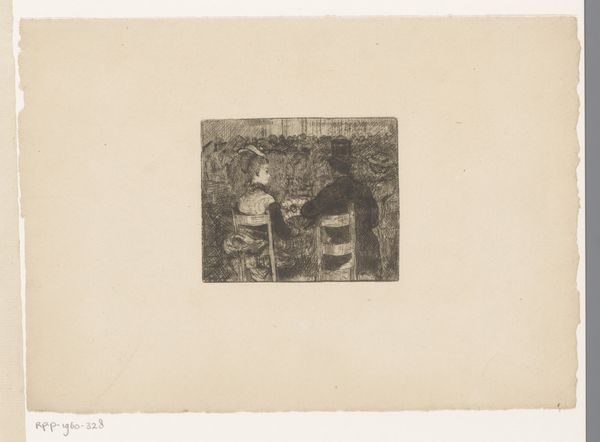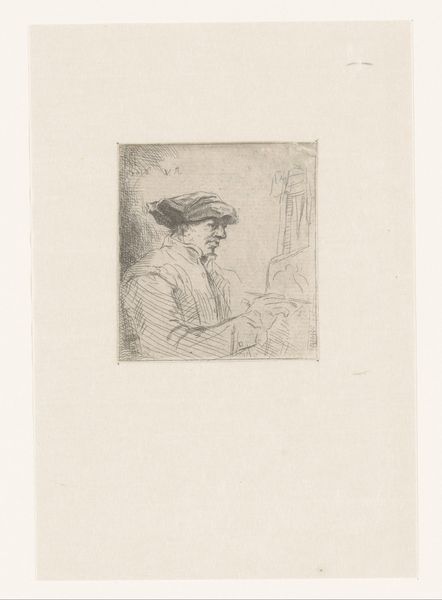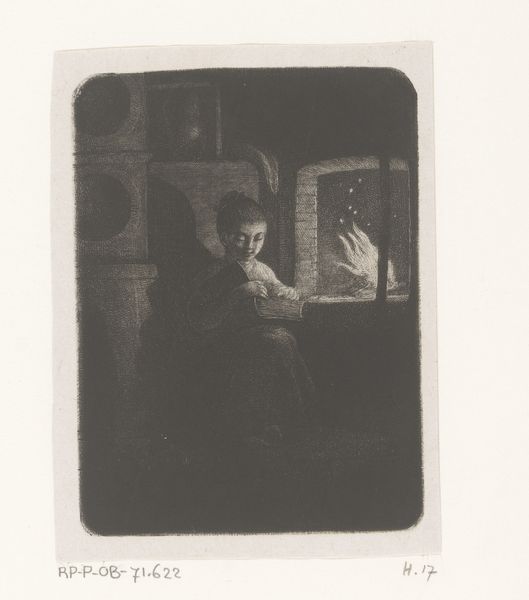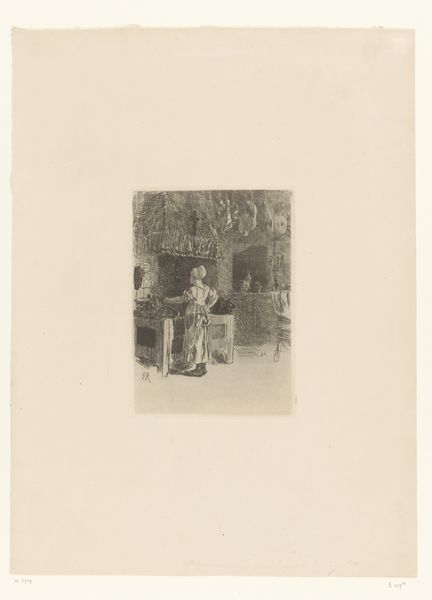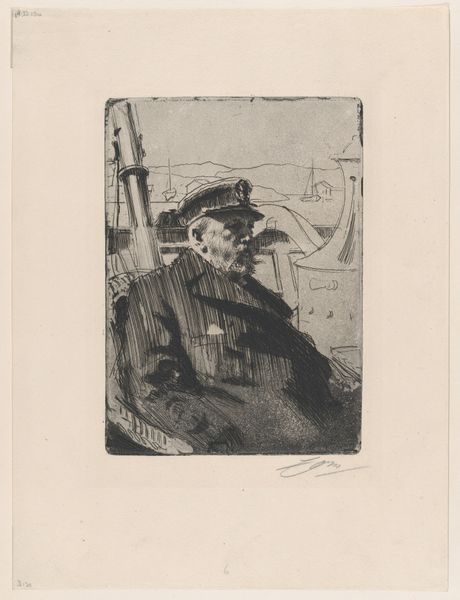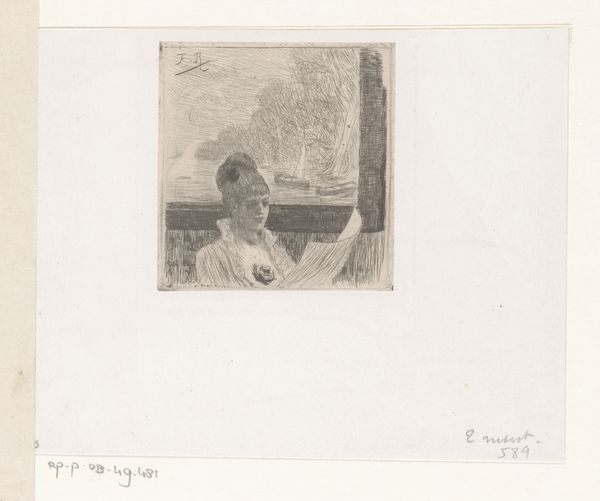
daguerreotype, photography
#
portrait
#
16_19th-century
#
daguerreotype
#
photography
#
france
#
realism
Dimensions: 7.5 × 6.5 cm
Copyright: Public Domain
Curator: Up next, we have Charles Nègre's "Kneeling Mason," a daguerreotype likely from sometime between 1854 and 1882. It’s part of the Art Institute of Chicago’s permanent collection. Editor: Wow, that’s quite moody! I’m immediately struck by the contrast – how the light almost carves the mason out of the shadows. It's heavy with feeling, even though it's just a simple scene. Curator: Nègre was fascinated with capturing the lives of working-class Parisians. He wanted to document these trades and individuals who were rapidly disappearing with the industrialization of the city. He often posed his subjects, imbuing these realistic depictions with his own social and artistic sensibilities. Editor: Knowing that gives it another layer. I see it now. It’s like he wanted to elevate the everyday. There’s something undeniably noble in the mason’s posture, the way his hands are engaged. What tools are those? Curator: He is crouching over what appears to be an array of small masonry bricks and his tools. And in addition to preserving a disappearing way of life, Nègre seemed intent on proving the artistry inherent in photography itself. Editor: He certainly does, beautifully, the textures, particularly the man's roughspun clothes and the grainy quality of the image. You can practically feel the grit on his skin. I can’t help thinking about how new photography was back then, a medium fighting for its place in the art world. Nègre shows just how intimate it can be. Curator: Precisely. He demonstrated photography's ability to convey not just visual information, but also social commentary and genuine emotional depth. Editor: So, much more than simply a study of working life. A statement about the power and validity of photography. Very quietly potent. I like it. Curator: Indeed. He really made this ordinary scene sing to the world, not just capturing an image, but capturing a sense of time and dignity. Editor: Well put, really adds to the layers we consider as it gazes back through history at us.
Comments
No comments
Be the first to comment and join the conversation on the ultimate creative platform.
